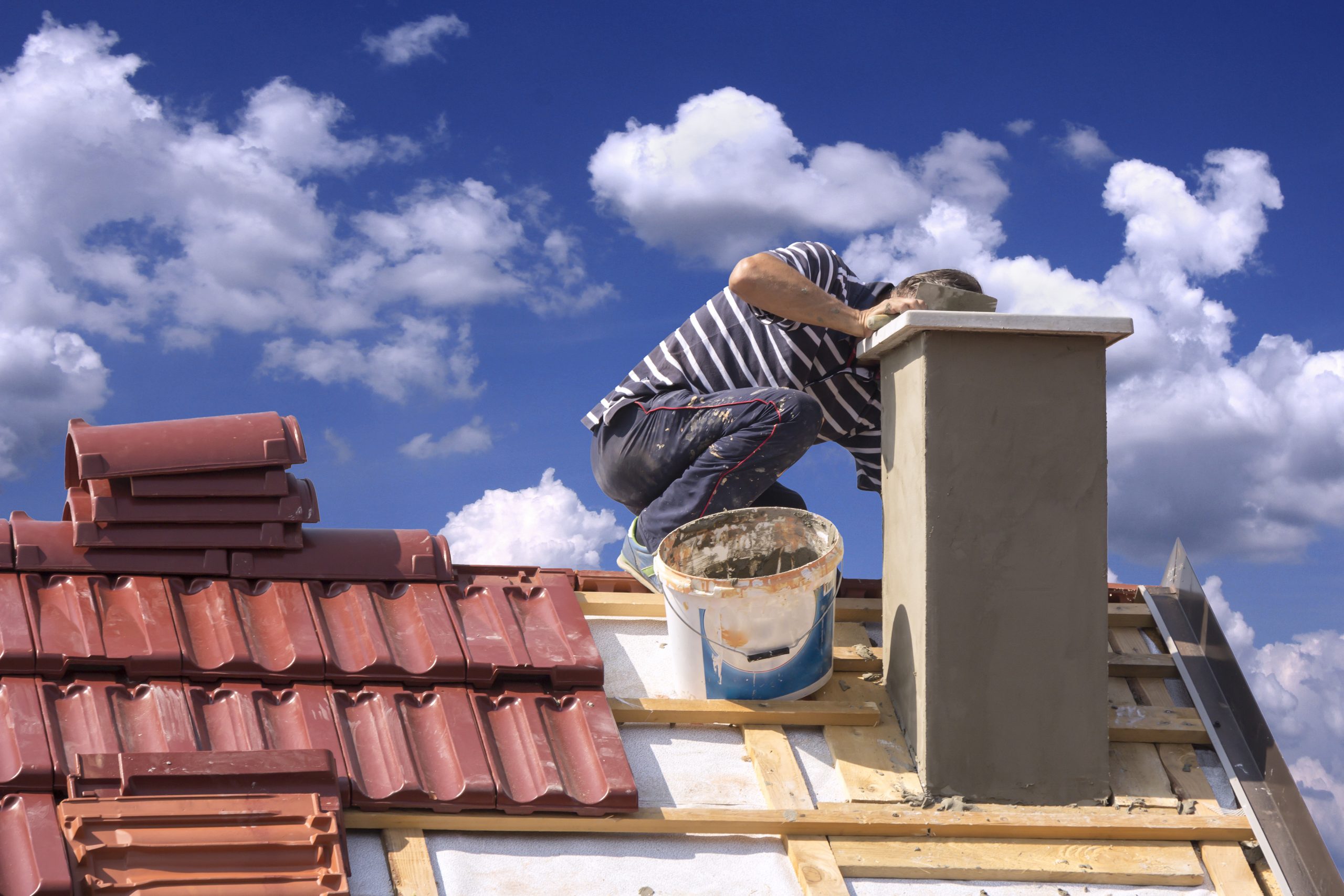Fireplaces are a highly-desired household feature for their economical heating and aesthetic appeal. While the fireplace itself gets much of the attention, a well-maintained chimney works behind the scenes to manage runoff.
The chimney is a critical component that demands close attention to ensure a safe, properly functioning fireplace. Faults in the chimney can decrease heating efficiency, block airflow and create structural integrity problems. All this equals greater repair costs, higher monthly utility bills and general safety concerns.
Ensuring long-lasting chimney performance starts with the proper upkeep and identifying issues. This guide will break down common chimney repair tips to keep it running smoothly.
Cleaning and Inspection
The most common cause of a chimney fire is an unclean chimney. Creosote build-up and debris that gets caught in the chimney can easily start fires and block the air passage. That can send toxic gases and smoke back into the home. If cracks open in the chimney’s masonry, it creates room for a fast build-up of hazardous material.
Having your chimney inspected and cleaned at least once a year is necessary for all chimneys and fireplaces used to burn wood. Inspections at the start or end of its seasonal use are recommended to fix and prevent potential issues.
Being vigilant daily and following up with a professional is still necessary for preventative purposes. Resolving issues quickly can save hundreds of dollars on additional repair costs.
Chimney Problems and Repairs
Chimney ventilation consists of these main elements — the crown, flue, flue lining, smoke chamber, damper and smoke shelf. Each part plays a role in managing the outward expulsion of smoke and protecting the structure from damage.
Monitoring for issues with any of these major components and tending to them early can save you significant money. Let’s explore the most common chimney problems and what you can expect to pay for each.
Failing Flashing and Water Leakage
Damaged flashing and seals are common causes of water leaking through the chimney. When it rains or the snow is melting, the joint between the chimney and roof maintains a waterproof seal. That protects the ceiling, walls and floor from suffering water damage and mold. Replacing chimney flashing that is improperly installed is important for long-term preventative maintenance.
Cracks in the Crown
Cracks in the crown or chimney structure can also allow water to seep in. The crown is a concrete slab that sits atop the chimney. It protects the bricks and mortar from water penetration. It’s critical to identify and repair cracks quickly to avoid prolonged water leaks.
If water mixes with the creosote in the flue, it creates an acidic substance that runs to the damper. That can cause rusting and failure of the damper, adding more to the repair bill. Additionally, water penetration can cause wood rot and mold within the home’s structure, requiring extensive repair.
Finding early signs of damage is critical to keeping your costs down. Inspect the crown annually, before or after you use it for the season.
Damaged Chimney Caps
The chimney cap filters out much of the debris and wildlife that can find their way into the flue. If there is damage to the cap, leaves, birds and rainwater can come down the chimney. Installing the proper cap can also protect the crown and veneer of the chimney when it has a large overhang.
Leaning and Deteriorating Chimneys
A leaning chimney means there is a foundational problem. Contacting a professional for an assessment is urgent because you may risk the chimney collapsing if left unattended for too long.
Leaning chimneys are often caused by the footer shifting or settling. That can also happen from the deterioration of materials. When the chimney shows major deterioration like crumbling brick and mortar or leaning, it may be time to rebuild or have someone anchor the footing. Maintaining the chimney regularly will keep the costs affordable and help prevent major repairs.
Check Your Chimney and Call a Professional
The chimney’s health is a major contributor to the comfort and safety of the home. With a functioning chimney, you reduce the risk of structural damage, uncontrolled fires and health problems. Scheduling inspections once or twice a year depending on how frequently you burn and performing regular visual checks for damage is essential. Regularly test the damper’s operation and repair any cracks or loose bricks before using the fireplace.
If you are concerned about chimney damage or would like to know more about proper chimney maintenance, contact Ray Arnold Masonry today. Our experts will quickly identify issues and offer cost-effective solutions to ensure the long-term integrity of your home’s structure.

